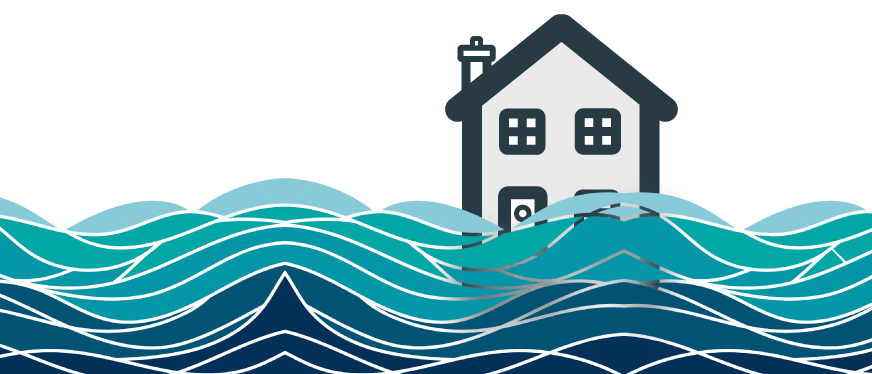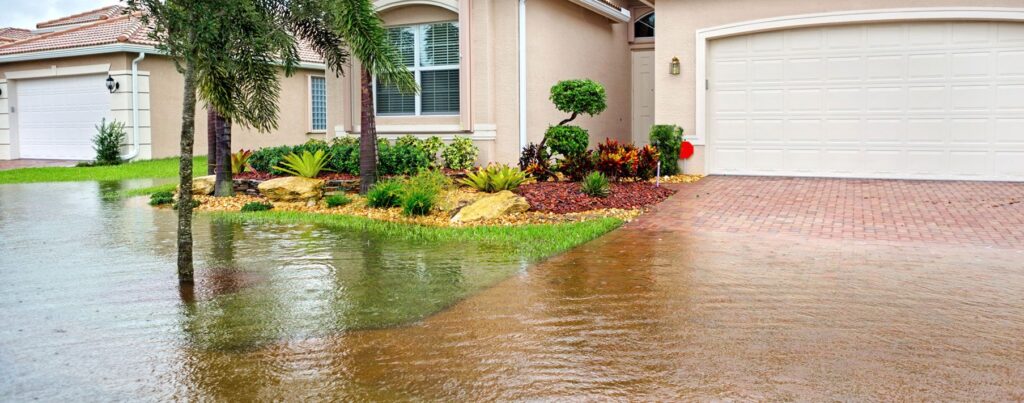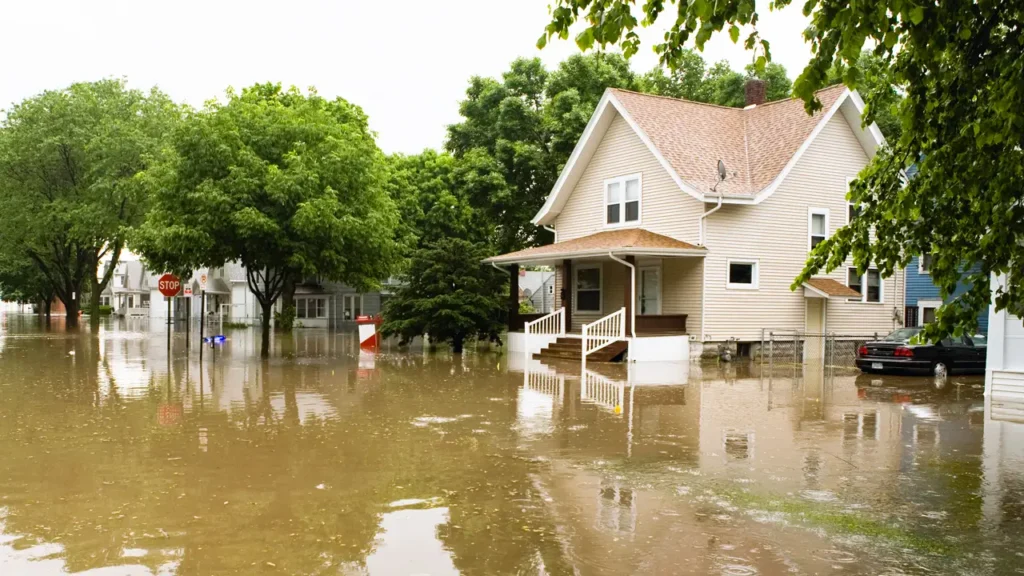Living in a flood-prone area brings unique challenges—and one of the most critical considerations is securing proper home insurance. Standard homeowners insurance policies typically do not cover flood damage, leaving many residents vulnerable to significant financial losses. Whether caused by heavy rainfall, overflowing rivers, hurricanes, or rapid snowmelt, floods can result in costly destruction to both the structure of your home and your belongings.
Homeowners in high-risk zones are strongly encouraged and sometimes required, to purchase separate flood insurance—either through the National Flood Insurance Program (NFIP) or a private insurer. Understanding the ins and outs of flood coverage, evaluating your risk, and knowing what’s included or excluded in your policy are essential steps in protecting your property. In this guide, we answer the most common questions about home insurance for flood-risk areas to help you make informed, confident decisions when insuring your home.
Why Flood Insurance is Essential in High-Risk Areas

Floods are among the most destructive natural disasters. They can cause immense structural damage, destroy personal belongings, and temporarily uninhabit homes. Unfortunately, standard homeowners insurance does not cover flood damage, leaving many vulnerable. For those in high-risk flood zones, flood insurance provides critical financial protection.
Understanding the Flood Risk in Your Area
Before purchasing flood insurance, it’s essential to determine your level of risk. The Federal Emergency Management Agency (FEMA) provides Flood Insurance Rate Maps (FIRMs) that classify areas into high, moderate, or low flood risk zones. Lenders often require flood insurance if you live in a high-risk zone.
Tip: You can check your risk zone using FEMA’s official website or through your local municipal planning department.
What Flood Insurance Covers (and Doesn’t Cover)
Flood insurance generally comes in two parts:
- Building Coverage: Includes structural elements such as the foundation, electrical systems, plumbing, HVAC systems, and appliances.
- Contents Coverage: Covers personal belongings like furniture, clothing, electronics, and valuables.

However, it typically does not cover:
- Temporary housing or additional living expenses
- Currency or precious metals
- Damage caused by mold or mildew that could have been prevented
Types of Flood Insurance Available
There are two primary sources of flood insurance:
- National Flood Insurance Program (NFIP): Managed by FEMA, the NFIP offers standardized coverage with set limits—up to $250,000 for buildings and $100,000 for contents.
- Private Flood Insurance: Offered by private insurers, these policies may provide higher coverage limits, additional benefits (like temporary housing), and more flexible terms.
Cost of Flood Insurance in Flood-Risk Areas
Several factors determine premiums for flood insurance:
- Your property’s flood zone
- Elevation and proximity to water
- Building construction type and age
- Coverage amounts and deductibles
Homes in high-risk areas will pay significantly more, but elevation certificates and flood-proofing measures (like installing flood vents) can reduce premiums.
How to Lower Your Flood Insurance Premium
There are several strategies homeowners can use to reduce their flood insurance premiums:
- Elevate your home above the base flood elevation.
- Install flood openings or vents in your foundation walls.
- Use flood-resistant materials for renovations or repairs.
- Keep your utilities and appliances above ground level.
- Obtain an elevation certificate to show insurers your reduced risk.
Claims Process for Flood Insurance
Filing a claim after a flood involves several steps:

- Notify your insurer immediately after the flood event.
- Document the damage with photos and videos.
- Make temporary repairs to prevent further damage (save receipts).
- Meet with the adjuster who will inspect the property.
- Submit a Proof of Loss form detailing the damages and costs.
Preparing for Future Flood Risks
Insurance is just one part of flood preparation. Homeowners in flood-risk areas should take proactive steps:
- Create a flood emergency plan for your family.
- Invest in sump pumps and drainage systems.
- Keep sandbags or barriers on hand during storm seasons.
- Stay updated on weather alerts and flood warnings.
- Consider upgrading to smart flood sensors that alert you to rising water levels.
Frequently Asked Questions
Does standard homeowners insurance cover floods?
No, standard policies exclude flood damage. You need a separate flood insurance policy for protection.
What is the National Flood Insurance Program (NFIP)?
NFIP is a federal program that provides flood insurance to homeowners, renters, and businesses in participating communities.
How do I know if I live in a flood-risk area?
Check FEMA’s Flood Map Service Center online to determine your flood zone and risk level.
Is flood insurance mandatory in high-risk zones?
Yes, flood insurance is required by law if you have a federally backed mortgage and live in a high-risk zone.
What does flood insurance typically cover?
Depending on your policy, it usually covers the structure of your home and essential systems (electrical, plumbing), plus personal belongings.
What’s excluded from flood insurance?
Most policies exclude basements, landscaping, temporary housing, and damage from sewer backups unless explicitly added.
Can I buy flood insurance from private companies?
Yes, some private insurers offer flood insurance with broader coverage than NFIP, often at competitive rates.
How much does flood insurance cost?
Costs vary based on location, coverage amount, property value, and flood risk, ranging from a few hundred to thousands annually.
How soon does flood insurance take effect?
NFIP policies usually have a 30-day waiting period. Private insurers may offer shorter wait times.
Can I bundle flood insurance with my home insurance?
Not directly, but some insurers offer package deals or discounts for bundling multiple policies.
Conclusion
Owning a home in a flood-risk area requires proactive planning and the right insurance coverage to avoid devastating financial loss. Since standard home insurance doesn’t cover flood damage, securing a dedicated flood insurance policy—either through NFIP or a private insurer—is crucial. Beyond just fulfilling mortgage requirements, this coverage ensures peace of mind during extreme weather events. While premiums can vary, the cost of not having coverage far outweighs the annual investment in a flood policy. Understanding your flood zone, policy details, exclusions, and additional options can empower you to make smart, protective decisions for your property and future.




